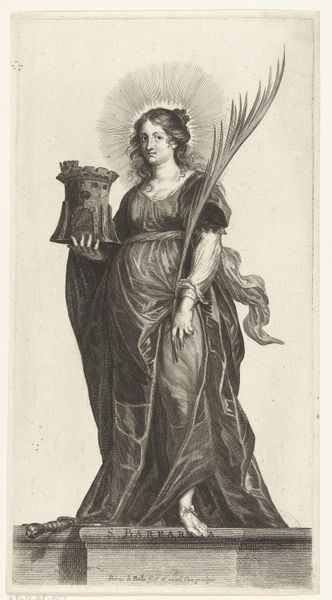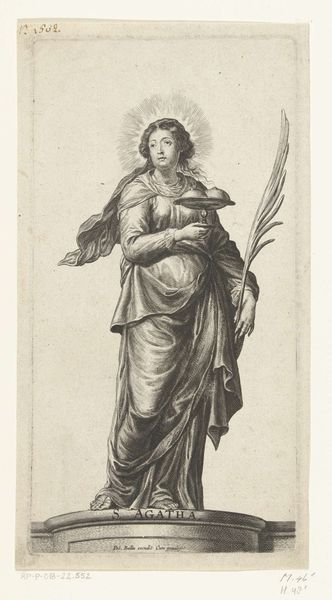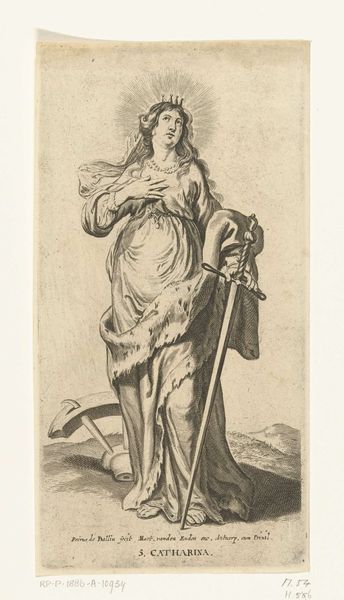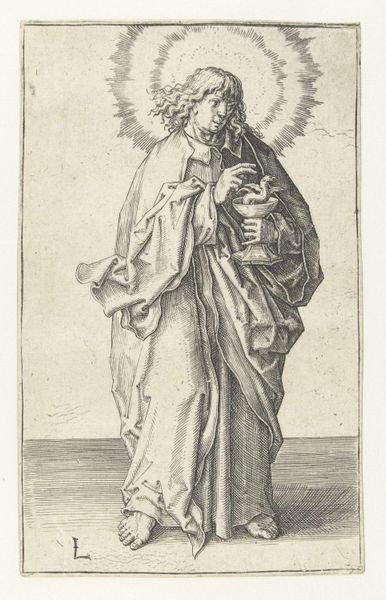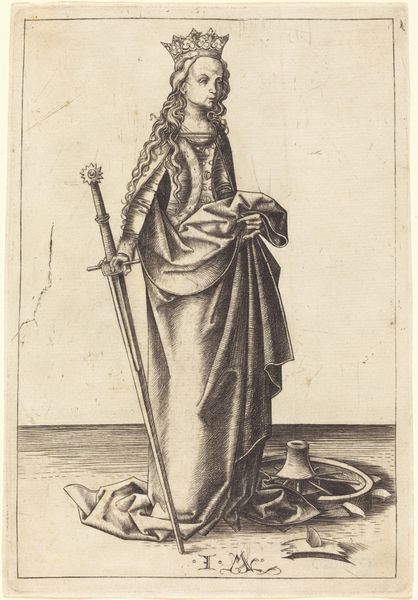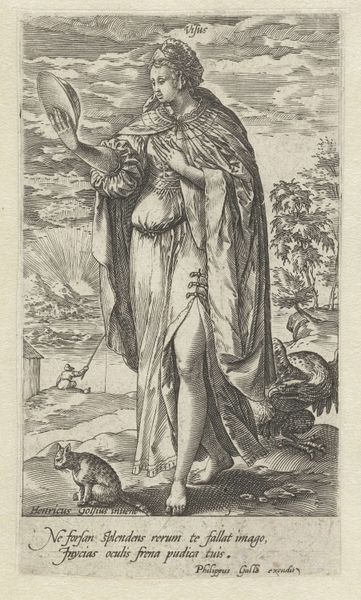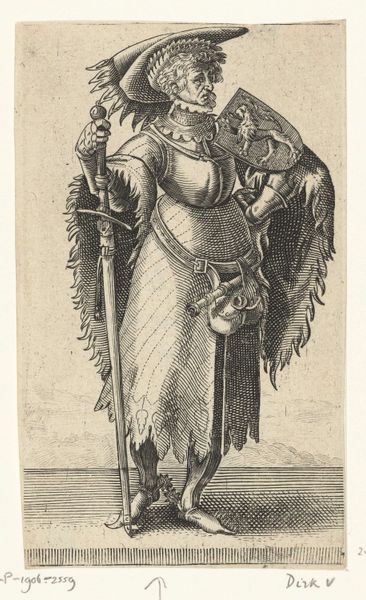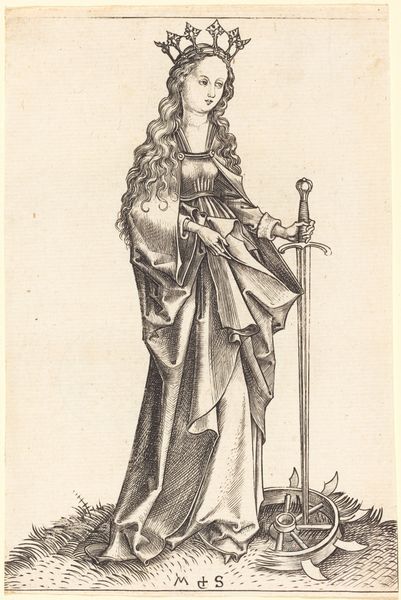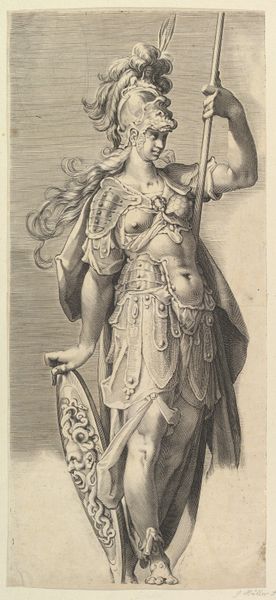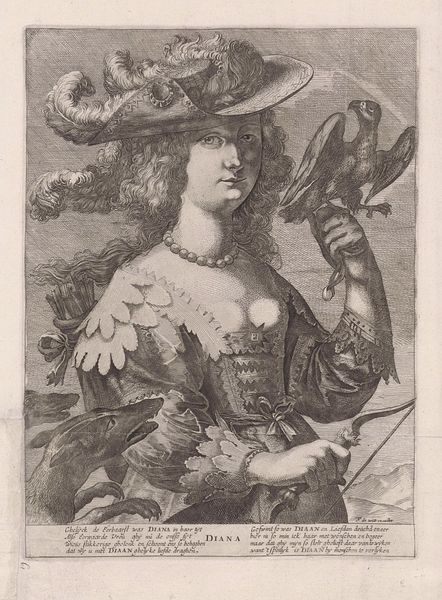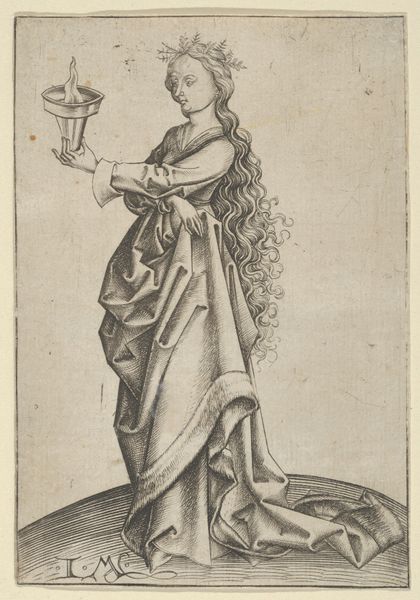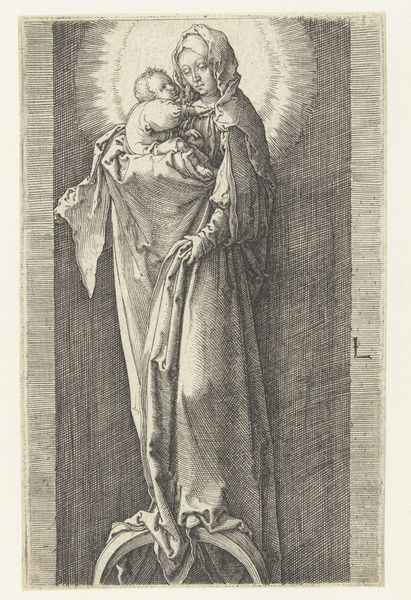
engraving
#
portrait
#
medieval
#
baroque
#
portrait drawing
#
history-painting
#
engraving
#
sword
Dimensions: height 258 mm, width 135 mm
Copyright: Rijks Museum: Open Domain
Curator: Pieter de Bailliu's engraving, "Saint Catherine of Alexandria with Emperor Maxentius," made sometime between 1623 and 1660... there's such a serene, powerful energy here. Editor: My initial feeling? Slightly unsettling. She's radiant, sure, with that baroque halo and determined gaze, but the slumped body of Maxentius at her feet is definitely doing some heavy lifting, narratively speaking. It speaks volumes about power and subjugation. Curator: True. But to me, the light catches her flowing gown just so—it looks almost like liquid light. I'm intrigued by the halo, radiating outwards—not a solid shape at all! And, this is silly maybe, but she somehow seems both very earthly and otherworldly. That confident gaze; but a bit sad, too? Editor: Let’s break it down. Catherine, an intellectual, refusing to worship pagan idols, challenging Emperor Maxentius, who then, legend has it, attempts to kill her on a spiked wheel, which miraculously breaks! Then she's beheaded. This print freezes a moment of triumph, but the horror of the story hangs in the air. It's about the power of faith against oppression. And a pretty gruesome tale! Curator: It makes you think about who gets to control these kinds of narratives too, right? Someone, probably a dude, gets to immortalize the Saint, after she is long gone, based on how *he* wants to frame this. Editor: Exactly. And this particular "take" shows Catherine as the victor over male authority and tyrannical power. Think about that sword she’s casually leaning on—not bad for a supposedly 'passive' woman. The crown? Symbolizing that her strength comes from something beyond earthly authority. We should consider how these portrayals of women reinforce or subvert social structures, religious and gendered norms! Curator: Yeah, like, who benefits when we turn a complicated, intellectual woman who refuses to compromise into a symbol, versus a whole person? It is like we, too, want to chop her up and serve her a certain way. Hmm... Editor: Food for thought, indeed. Ultimately, this work functions as more than just an artwork; it embodies historical narratives that continue to fuel discussions on power, faith, and identity. Curator: I came for the light, and now I am off to fight tyranny... thanks for cracking open my perspective here, let's keep it up!
Comments
No comments
Be the first to comment and join the conversation on the ultimate creative platform.
